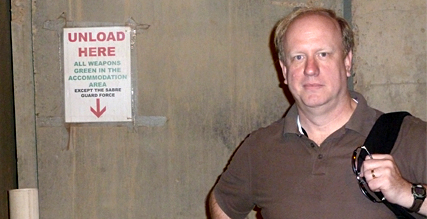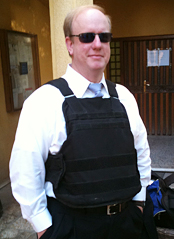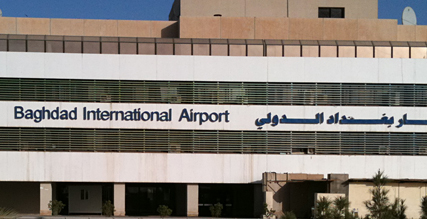By Patricia Baldwin
Lifestyle Writer for The Texas Lawbook
Mark Twain once wrote, “Travel has no longer any charm for me.” And presumably, the journalist-turned-author never took off his shoes for a TSA screening. Also never one to let the facts get in the way of a good story, Twain opined (a lot) about the travails of travel – not unlike the many Texas attorneys among the ranks of today’s frequent fliers. Some, in fact, sound almost Twain-esque.
Like Vinson & Elkins’ Jim Loftis: “There are two types of luggage – carry-on and lost.”
Or his colleague and former V&E managing partner Joe Dilg on reward miles: “It’s a little like the pie-eating contest, and the award is more pie.”

And you must marvel at the storytelling talents of Thompson & Knight’s 12-million-miler Andy Derman, who once packed a life jacket, along with his BlackBerry, for a business trip. He used both – the BlackBerry as a flashlight.
Derman, who heads T&K’s International Energy Practice Group in Dallas, often travels to primitive locales. About a year ago along the Nicaraguan Atlantic Coast, Derman’s group, which included the president of a client company and a younger law partner, became stranded on a barrier island for the night. The proffered sleeping accommodations were in a hut on stilts. The lawyers graciously offered the single cushion to the client.

Most frequent travelers have the ubiquitous horror stories. Some are typical, such as a night on an airport floor or, perhaps worse, an undesirable motel room in Yonkers, N.Y. Some are atypical, such as Loftis’ account of being shot at during the 1991 Soviet coup d’etat.
Such frustrations and hazards often separate the traveling “pros” from the “amateurs.”
Loftis, who heads V&E’s International Dispute Resolution practice and maintains offices in Houston and London, says, “The real art to traveling well is the ability to adapt and overcome. Anybody can plan.”

“One might say that is slightly obsessive,” Loftis acknowledges about his tome, “but there are some hard-learned lessons in there.”
Another Loftis-ism: “Fix the problem. Don’t get angry.”
Dallas-based David Norton agrees. He heads the Aviation Law practice at Shackelford, Melton & McKinley. A former U.S. Air Force pilot, Norton flies commercial for business and flies a small airplane for fun. (“My wife says I’m basically all airplanes all of the time.”) When it comes to schedule delays and cancellations, he thinks he is more “tolerant” than the average air traveler. His pet peeve, however, also comes with his experience – “when the airline tells you one thing, and it’s something else ….”
Clients often ask Norton about aircraft ownership. His short answer: Income tax issues pose a “high hurdle.” He does, however, offer some general guidelines.
Norton suggests trying charter flights for a travel schedule of 100 or fewer hours per year. He says that fractional ownership becomes attractive at a level of about 100 to 200 hours annually. Plane ownership becomes a consideration for clients who consistently fly 300 hours and more annually, especially for those traveling to a spectrum of locales or remote destinations.

The idea that corporate airplanes are merely luxuries is a misconception, Norton says, adding, “What an airplane gives you is time.” He notes that a company, which flies a business team to four or five places a day, is using a corporate jet as an “enormous leveraging tool.”
Norton, like other frequent travelers, turns travel time into work time. He recommends using “Mi-Fi,” a mobile hotspot that he considers more secure than an airport’s Wi-Fi connection.
The longtime fliers appreciate improving technologies and, in particular, the airlines’ own mobile travel apps. Loftis also likes Flight Tracker. Dilg uses Flight Guide iEFB (and reads books) on his iPad. Hilder prefers Kayak and TripAdvisor. And he recommends that frequent fliers apply for Global Entry, a U.S. Customs and Border Protection program that allows expedited clearance at an expanding list of airports. (See www.globalentry.gov)
And, of course, the premier levels of flier benefits (often levels of mileage unpublished by the airlines) have special perks. Loftis notes, “I have a person.” Actually, he has “people” the airlines provide to help him through whatever travel challenge he faces.
Perks also extend to the families of frequent fliers who, most often, are the recipients of the reward miles. Dilg takes his wife on trips to China. Norton’s two children see their grandparents in Ohio more often. On a transatlantic flight, a pilot let Loftis’ then 6-year-old son see the stars from the cockpit. Hilder’s friends and relations often visit his wife’s homeland of Ireland. And when Derman’s children were growing up, they met his work associates. “When I talked about people, it wasn’t just a story,” he recalls. “They could relate to them.”
More tips? Here’s a compilation of the veteran travelers’ lessons.
* Have back-up plans. Assume there is a delay in your future.
* Have back-up plans for your back-up plans. Know the times of the next two or three flights after your scheduled departure.
* Take the first flight out in the morning. It’s the least likely to be delayed.
* Keep a packed suitcase at home.
* Carefully schedule multiple-destination trips so you have time to get laundry done in a hotel.
* If you are not going immediately to a meeting upon arrival, wear athletic shoes. They are bulkier to pack, and you will have them for the hotel fitness room.
* If you are connecting in the United States, have a hotel reservation in the connecting city. Send a text to an assistant or travel agent to cancel.
* Learn about the aircraft you fly and request seats that give you predictable work environments. For seating configurations, see www.seatguru.com.
* Manage time zones. Loftis maintains a “hybridized” time zone when he is in Houston to stay balanced with European time zones. He is up and working at home by 4:30 a.m. That means his day at the office ends at 3:30 p.m. He then has family time and goes to bed early.
* And when you get home, consider a “Spouse Maintenance Weekend.”
For some final words, Loftis alters author Dorothy Parker’s famous lines about writing. He probably speaks for most frequent fliers: “I hate travel. I love having traveled.”
CANVASSING CANVAS
Several frequent fliers tout a Lands’ End canvas briefcase that easily stuffs under an airline seat. The company’s original Square Rigger Attaché, however, is no longer available. Of the three current offerings, the Lighthouse Deluxe Briefcase, at $148, gets the highest rating by reviewers, with four out of five “sailboats.” (See www.landsend.com)
THE ART OF TRAVEL
Traveling often provides shopping adventures. In a small London shop, Joe Dilg purchased the circa-late-1700s map that now hangs on his office wall at Vinson & Elkins. The map lists the region we know as Texas as the “Great Space Unknown.”
Do you have a special travel “find” or experience – or other lifestyle interest – to share? Please email patricia.baldwin@texaslawbook.net.
